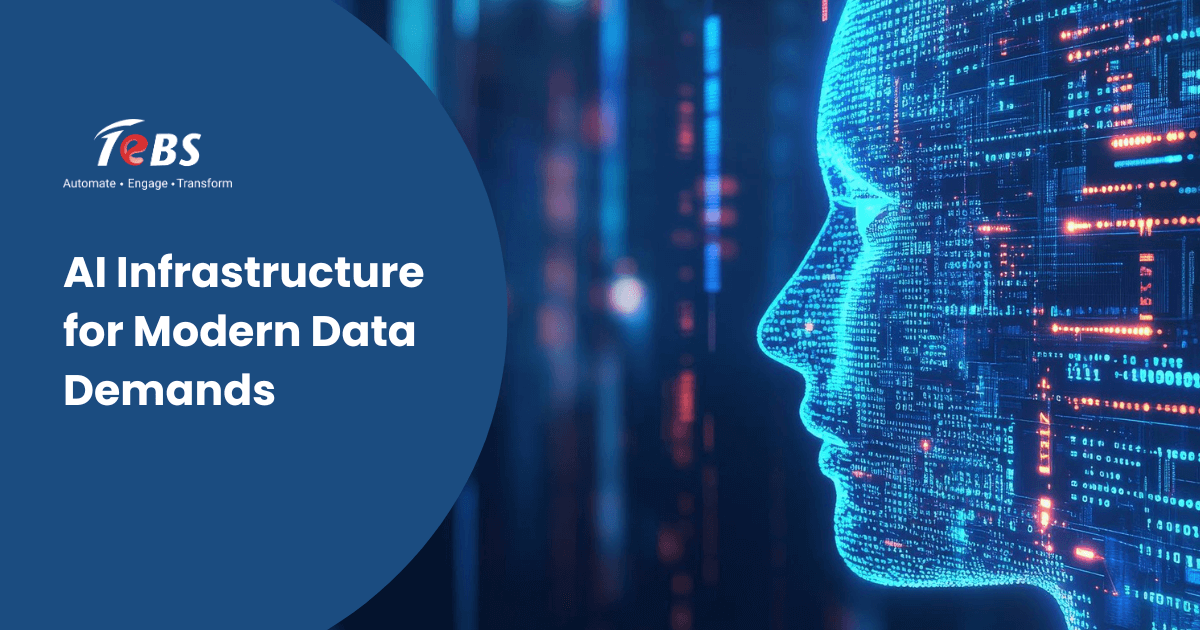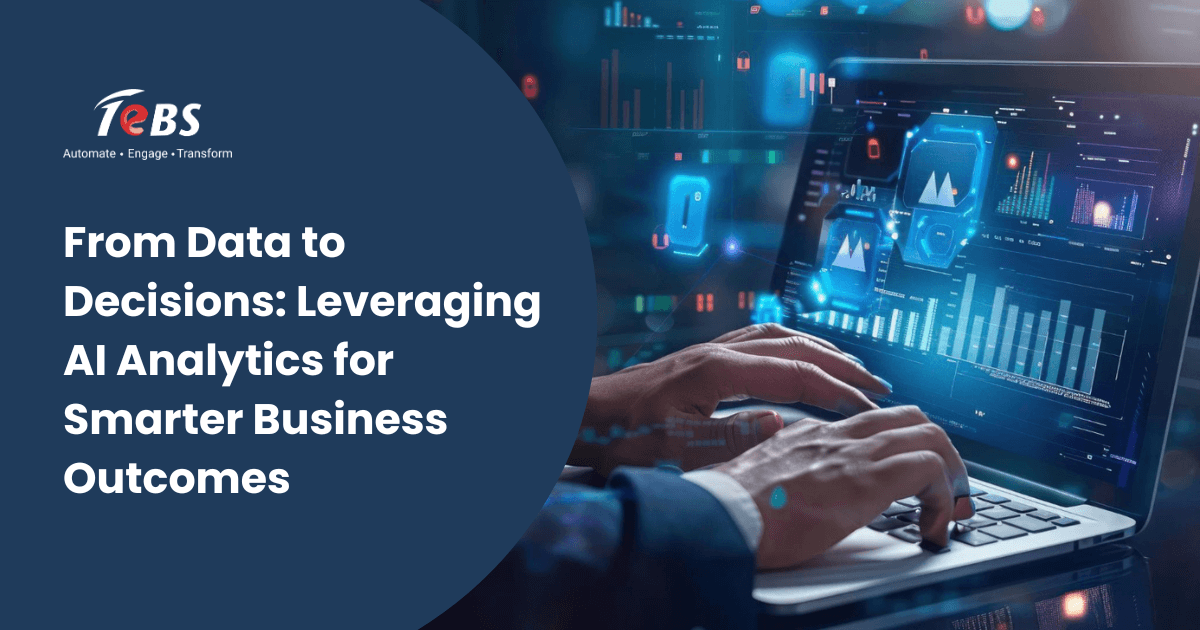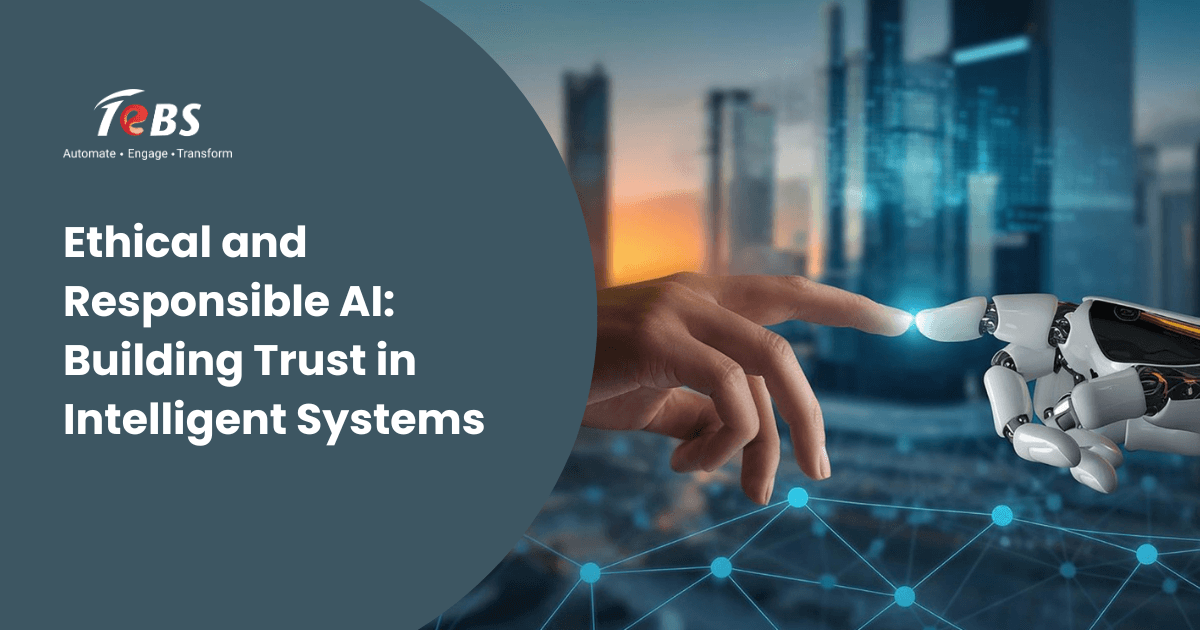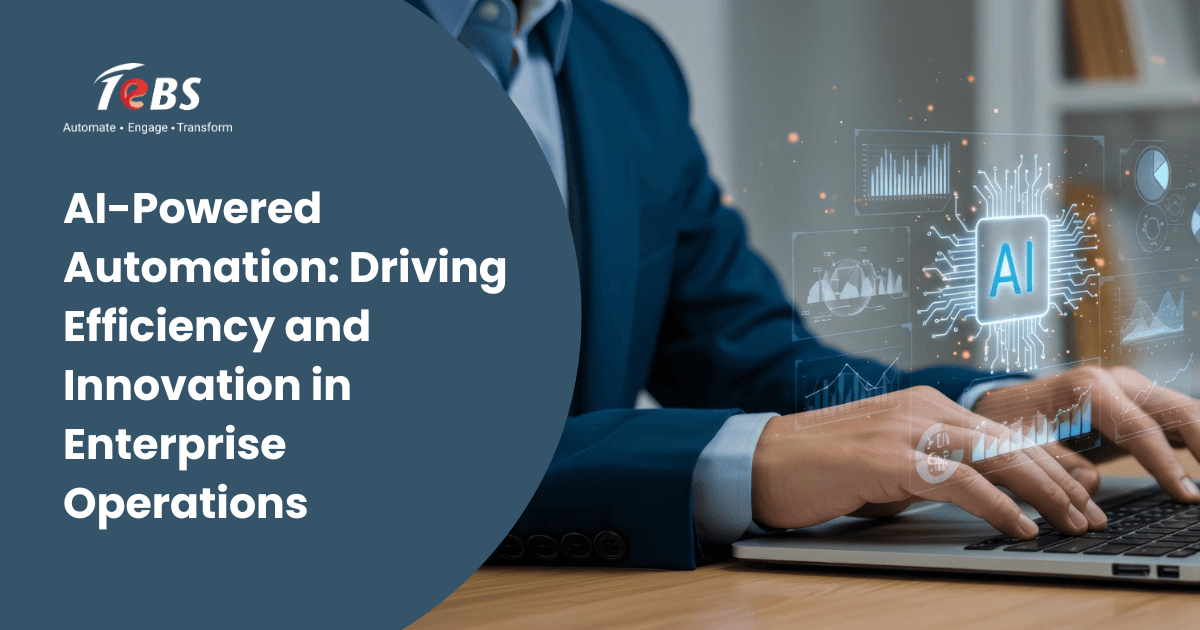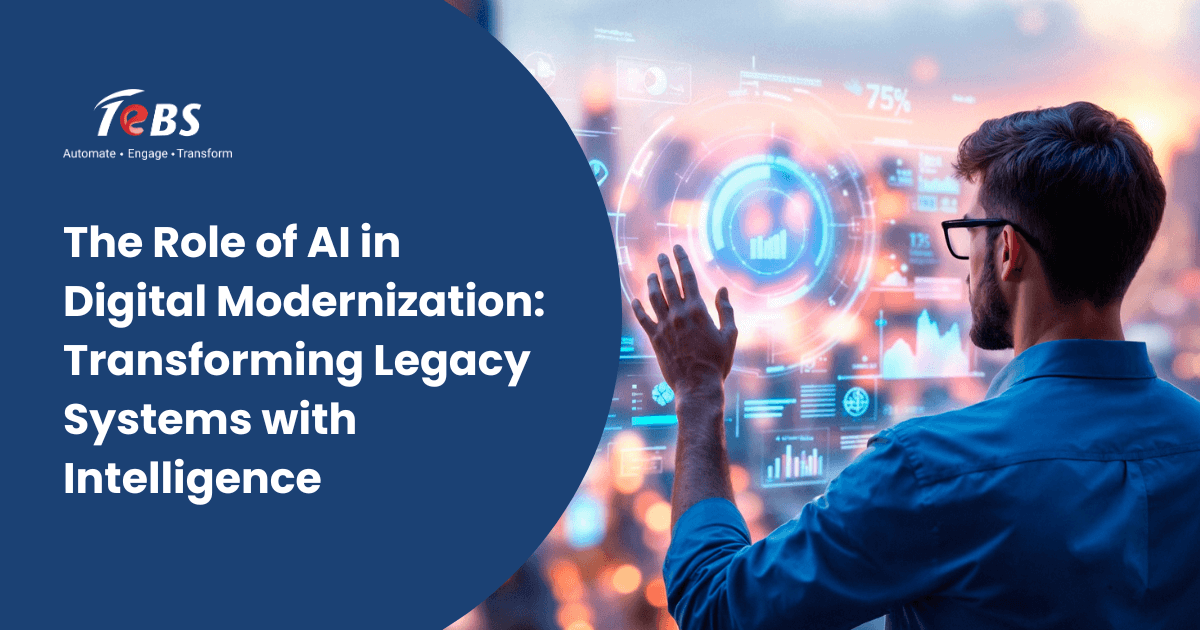As organizations increasingly rely on digital operations, the volume, velocity, and variety of data they generate and manage has surged. From transactional data to social media feeds, sensor outputs, and real time analytics, businesses now deal with massive datasets that traditional infrastructure often struggles to handle. To remain competitive, organizations require systems that can process, analyze, and act upon this data efficiently.
The need for an updated infrastructure that supports artificial intelligence has been fueled by the growing demand for cognitive, real-time data processing. The integrated collection of resources, tools, and technologies required to support AI workloads, such as advanced analytics, deep learning, and machine learning, is referred to as AI infrastructure. It serves as the cornerstone for businesses looking to use AI for optimization, automation, prediction, and personalization.
Explore our AI automation services to see how we help organizations build and scale intelligent systems.
Adding AI tools to current surroundings is not enough to meet the expectations of today’s data-driven world. It demands that infrastructure be completely redesigned to facilitate large data processing, high-speed computation, and continuous learning.
Core Elements of AI Infrastructure
Building AI infrastructure involves more than powerful computers or large datasets. It is a sophisticated combination of hardware, software, and data architecture designed to manage the complexities of AI workloads. Here are the key elements that make up effective AI infrastructure:1. High Performance Computing Resources
AI workloads are computationally intensive. They require advanced processors such as Graphics Processing Units and Tensor Processing Units that can handle parallel processing at scale. These processors significantly reduce the time required to train machine learning models, enabling faster innovation.2. Scalable Storage Systems
AI applications generate and consume vast amounts of data. Scalable, high-speed storage systems are essential to feed data to AI models without causing bottlenecks. Both structured and unstructured data must be stored in a way that allows easy access, retrieval, and integration.3. Data Pipelines and Management
Efficient data pipelines are critical for preparing data for AI training and inference. This includes tools for data ingestion, cleansing, transformation, labeling, and governance. AI infrastructure must support seamless data flow from source to model to output, ensuring data quality and compliance throughout the process.4. AI and ML Frameworks
The infrastructure must support popular machine learning frameworks like TensorFlow, PyTorch, and Scikit-learn. Integration with these frameworks ensures compatibility and accelerates development cycles.5. Cloud and Edge Capabilities
Modern AI infrastructure often combines cloud platforms for scalability with edge computing for real time processing at the source. This hybrid approach optimizes performance, reduces latency, and supports use cases where time-sensitive decisions are required.
Leveraging cloud environments—such as Microsoft Azure’s approach to secure, scalable AI infrastructure—is essential for managing compute-heavy, generative, and real-time AI workloads.
6. Networking and Connectivity
AI applications rely on high-bandwidth, low-latency networks to move data quickly between compute nodes, storage systems, and application endpoints. Strong network architecture is a foundational element of any AI-ready environment.
7. Security and Compliance
AI infrastructure must include tools for identity management, access control, encryption, and monitoring to ensure data privacy and regulatory compliance. Trust in AI systems begins with secure infrastructure.Benefits of Implementing AI Infrastructure
Investing in AI infrastructure delivers significant value across business functions. Organizations equipped with the right systems can unlock insights, improve efficiency, and deliver better outcomes.
Explore how we enabled operational excellence through AI infrastructure for scalable digital transformation in a recent case study.
Accelerated Innovation
AI infrastructure enables faster experimentation and model training, reducing the time from concept to deployment. This empowers teams to iterate quickly and innovate across product development, customer experience, and operations.Enhanced Decision Making
With robust infrastructure, businesses can process data at scale to generate deeper insights. This leads to more informed decision making supported by real time analytics, predictive modeling, and AI-driven recommendations.Improved Operational Efficiency
AI systems automate complex workflows and repetitive tasks. With dedicated infrastructure, these systems operate more efficiently, helping reduce costs and increase productivity across departments.Scalability and Flexibility
Modern AI infrastructure is designed to grow with your organization. Whether deployed on-premises, in the cloud, or at the edge, it provides the flexibility to scale as data volumes and use cases expand.Competitive Advantage
Organizations that adopt AI infrastructure early gain a strategic edge. They are better positioned to deliver personalized services, respond to market shifts, and optimize processes in ways that traditional systems cannot match.Key Considerations for Adopting AI Infrastructure
Implementing AI infrastructure is a strategic initiative that involves careful planning and execution. Several factors must be considered to ensure a successful deployment:Assessing Business Needs and Use Cases
Before investing in AI infrastructure, organizations must define their goals and identify specific use cases. This helps align infrastructure choices with business outcomes, ensuring resources are used effectively.Choosing the Right Deployment Model
Based on regulatory requirements, data sensitivity, and scalability needs, organizations must decide between on-premise, cloud, or hybrid deployment models. Each option comes with its own benefits and trade-offs.Data Readiness and Governance
AI systems are only as effective as the data they are trained on. Ensuring data is clean, accessible, and compliant is a critical prerequisite. Organizations must implement robust governance frameworks for managing data quality and security.Workforce and Skills Development
AI infrastructure must be supported by skilled professionals who can manage systems, develop models, and drive innovation. Investing in upskilling or hiring AI specialists is an important part of infrastructure readiness.Integration with Existing Systems
Seamless integration with existing enterprise systems is essential for maximizing the value of AI infrastructure. Interoperability with data sources, applications, and workflows should be a priority in the planning phase.Cost Management and ROI
AI infrastructure involves significant investment in hardware, software, and expertise. A well-defined strategy for cost control and a framework to measure return on investment ensures long-term value.Vendor and Technology Ecosystem
Partnering with experienced vendors helps in accessing the right technology stack, support services, and industry best practices. Choosing a scalable and open architecture prevents lock-in and allows future flexibility.Future of AI Infrastructure
AI infrastructure is rapidly evolving to meet the increasing complexity and diversity of modern applications. Looking ahead, several trends will shape the next generation of AI environments:Rise of AI as a Service
Cloud providers are expanding their AI services, offering pre-built models, scalable compute, and end-to-end tools for data science. This makes AI more accessible and reduces infrastructure management overhead.Integration of Generative AI Workloads
With the growing popularity of generative AI, infrastructure must now support large language models and multimodal systems. This requires even more powerful compute, memory, and optimization techniques.Autonomous Infrastructure Management
AI is being used to optimize its own infrastructure. Self-managing systems can monitor performance, detect anomalies, and adjust resources automatically to ensure optimal operation.Increased Focus on Sustainability
As AI systems become more energy intensive, sustainability is becoming a core design principle. Energy-efficient hardware, carbon-aware computing, and responsible data practices are gaining importance.Edge and Federated Learning Expansion
As data generation shifts to the edge with IoT and mobile devices, infrastructure is evolving to support decentralized learning. Federated learning enables model training across distributed nodes while preserving privacy.Enhanced AI Governance
As AI adoption grows, so does the focus on responsible AI. Future infrastructure will include built-in capabilities for bias detection, explainability, and compliance with ethical and legal standards.Conclusion
Meeting the needs of modern data-driven organizations requires more than traditional systems. AI infrastructure provides the foundation for organizations to extract value from data, build intelligent solutions, and scale innovation efficiently. By combining high-performance computing, scalable storage, optimized data pipelines, and secure architecture, businesses can unlock new levels of performance and agility.
Investing in AI infrastructure is not just a technology upgrade, but a strategic decision that enables continuous growth, smarter decisions, and improved service delivery, made possible through the right AI technology services tailored to your business needs.
As future demands continue to evolve, having the right infrastructure in place ensures your organization remains ready to adapt and lead with intelligence.
To explore how your organization can benefit from scalable and future-ready AI infrastructure, connect with our experts at [email protected]
Frequently Asked Questions (FAQs)
What is AI infrastructure and why is it important?
AI infrastructure is the collection of hardware, software, and data systems that support artificial intelligence workloads. It’s important because it enables organizations to process massive datasets, train complex models, and deploy AI applications at scale—driving efficiency, innovation, and competitiveness.
What are the main components of AI infrastructure?
Key components include high-performance computing resources (GPUs, TPUs), scalable storage systems, data pipelines and management tools, AI/ML frameworks, cloud and edge capabilities, networking, and security/compliance mechanisms.
How does AI infrastructure support modern data demands?
AI infrastructure is designed to handle large volumes, velocity, and variety of data. It ensures real-time processing, efficient storage, and seamless data flow, making it possible to analyze complex datasets and generate actionable insights quickly.
What role does cloud computing play in AI infrastructure?
Cloud platforms provide scalable compute, storage, and AI services on demand. They reduce upfront infrastructure costs, enable flexible deployment models, and support workloads like generative AI and large-scale machine learning.
What is the difference between AI infrastructure and traditional IT infrastructure?
Traditional IT infrastructure focuses on supporting general applications and databases, while AI infrastructure is optimized for data-heavy, compute-intensive workloads such as deep learning, real-time analytics, and predictive modeling.
How do you choose the right AI infrastructure for your business?
The right infrastructure depends on business goals, data sensitivity, scalability needs, and compliance requirements. Organizations should evaluate deployment models (on-premise, cloud, hybrid), integration needs, and cost-effectiveness before investing.
What are the challenges in implementing AI infrastructure?
Challenges include high costs, data readiness issues, integration with legacy systems, shortage of skilled talent, and managing governance, privacy, and regulatory compliance.
How does AI infrastructure improve data processing speed?
Through high-performance computing resources, parallel processing, optimized pipelines, and low-latency networking, AI infrastructure accelerates data preparation, model training, and inference—reducing time to insight.
What industries benefit the most from AI infrastructure?
Industries such as healthcare, finance, retail, manufacturing, public sector, and technology benefit greatly. They use AI infrastructure for predictive analytics, fraud detection, customer personalization, predictive maintenance, and more.

